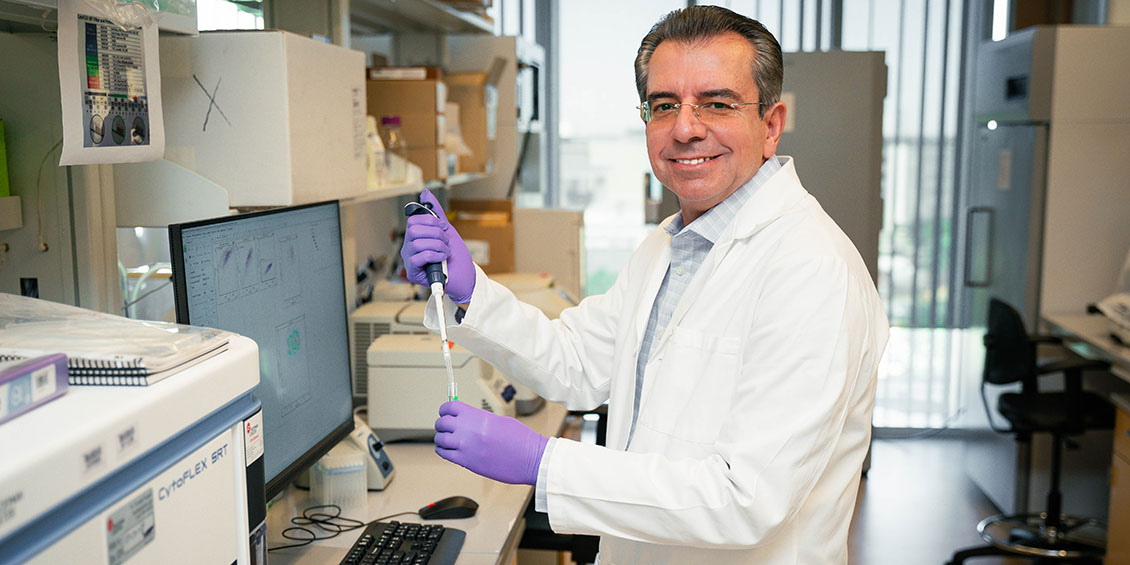Research News
Cross-Talk Clues to Muscle Regeneration
Darabi Receives $390K NIH Award to Develop Novel Stem Cell-based Therapies for Skeletal Muscle Disorders
Nov. 26 — While patients with muscle disorders such as muscle loss injuries and muscular dystrophies wait for a cure, regenerating muscle and halting disease progression through regenerative medicine is a novel approach to improve life expectancy and quality of life.
University of Houston College of Pharmacy's Radbod Darabi, M.D., Ph.D., associate professor of pharmacology, is investigating how stem cells communicate with each other during muscle regeneration as well as how multicellular stem cell-based therapeutics can be designed for skeletal muscle disorders.
Backed by a two-year, $390,000 grant from the National Institutes of Health's National Institute of Arthritis and Musculoskeletal and Skin Diseases, Dr. Darabi’s efforts are focused on using reprogrammed cells known as human induced pluripotent stem cells (iPSC) to bolster the therapeutic efficiency of these cells and enhance muscle regeneration in patients suffering from muscle injury or dystrophy.
Unlike other adult muscle tissues, such as the heart, skeletal muscle is endowed with an excellent regenerative capacity due to a population of tissue-resident stem cells that are activated to repair and replace lost muscle fibers in response to damage. Skeletal muscle cells such as myogenic progenitor cells (MPCs) and vascular endothelial cells (ECs) are two cell types that are key for normal muscle tissue growth and development. During skeletal muscle regeneration, ECs and MPCs interact together – also known as cross-talks – to form new muscle fibers and blood vessels.
The Darabi lab will utilize co-culture methods, thereby physically separating human iPSC-derived MPCs and ECs into two different populations and allowing communication via a process called paracrine signaling. During this process, cells secrete molecules that diffuse to nearby cells, triggering a cellular response that regulates their activities like cell migration, differentiation, maturation, and eventually muscle tissue regeneration. The lab also plans to develop, test and optimize therapeutic efficacy of the combinational MPC and EC based-cell therapies in animal models for muscle injury and dystrophy.
Upon injection of the cells into an injured or dystrophic muscle, the researchers will evaluate the survival and engraftment – how well the donor stem cells integrate into recipient tissue and form new muscles fibers – of the human iPSC-derived ECs and MPCs. The data will also help determine the efficiency and appropriate cell ratio of combined human iPSC-EC and MPC therapy in the models.
"By studying this cellular interaction, we hope to develop a novel stem cell-based therapy approach for treatment of muscle disorders," Darabi said. "Results of this study also pave the way toward development of multicellular, bioengineered muscle tissues which can be used for surgical replacement of muscle loss, a very common type of muscle injury during combats, car accidents, or after tumor resections.
"Another significant advantage of this research is using reprogrammed stem cells, which can be derived from the patients' skin or blood cells, with exponential expansion potential and fully matched immune profile, eliminating the risk of graft rejection."
